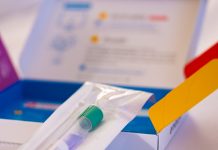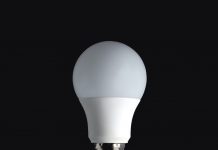We pay particular attention to the health of our body systems and brains as we age, so it’s important to remember that we also have to take care of the health of our cells in order to reap the benefits of a healthy lifestyle. The function of the mitochondria, the energy producing organelle within our cells, is a key part of the aging process. There are a few supplements aimed at mitochondrial health which recent research has connected to the age-related accumulations of toxic plaques we encounter with neurodegenerative disease in the brain. This time, however, the researchers have found those same plaques in aged muscle tissue.
Why Beta Amyloid Protein Can Be Harmful
In Alzheimer’s disease, neurodegeneration and high levels of inflammation are marked by the presence of beta amyloid plaques. These beta amyloid plaques are proteins that fail to fold correctly within the cells and occur as part of a normal aging process. In the brain, these proteins pile atop one another and cause tangles, significantly reducing the body’s ability to sweep these accumulations away. When these proteins accumulate, they become toxic and lead to significant deterioration of brain function.
For the first time, scientists have found that these same beta amyloid proteins are present in muscle tissue, especially skeletal muscle tissue. It leads to the same type of incorrect folding and tangling and leads to accumulation and toxicity in the same manner in which it occurs in the brain. This causes deterioration of muscle function and damage to the mitochondria of the cell.
Mitochondria’s Role in Aging
The mitochondrial decline occurs as a normal part of aging. One theory behind mitochondria aging supports the belief that mutations within the mitochondrial DNA increase at the same time that overall function of the organelle declines. These changes lead to more oxidative damage and a weakened ability of the mitochondria to remove the oxidative damage.
The discovery of the beta amyloid accumulations in skeletal muscle tissue has been confirmed in worms, humans, and mice. It was first studied in worms (nematodes) and then human in-vitro cell tissue, followed by mice. The scientists at France’s EPFL’s School of Life Sciences then applied the practice of initiating a reversal of mitochondrial damage through administering the vitamin nicotinamide riboside.
What NAD+ Levels Mean & The Results
Nicotinamide riboside is a vitamin subset of Vitamin B3 which boosts levels of a biomolecule known as NAD+ (nicotinamide adenine dinucleotide). It’s become a popular supplement recently because of its promising preliminary results of increasing longevity, reducing age-related cell damage, and its neuroprotective capabilities. Low levels of NAD have been linked to higher incidences of aging in cells.
The human muscle tissue cells which were exposed to the Nicotinamide riboside activated mitochondrial “defense” systems which improved function of the mitochondria and reduced the amyloid protein accumulations. In mice, the same effect was seen in their skeletal muscle tissues, leading scientists to target cellular health in the fields of both brain and muscle deterioration with aging.
NAD+ levels can be increased by taking in more of the precursors needed for its synthesis which include food sources of cucumbers, edamame, cabbage, tomatoes, broccoli, and avocados; or via taking supplements specializing in providing the precursors. One precursor, NMN (nicotinamide mononucleotide), has been found to have greater bioavailability so far. Bring this up with your doctor if you're interested in the information found here today.
References
Romani, Mario, et al. “NAD+ Boosting Reduces Age-Associated Amyloidosis and Restores Mitochondrial Homeostasis in Muscle.” Cell Reports, vol. 34, no. 3, ser. 108660, 19 Jan. 2021. 108660, doi:https://doi.org/10.1016/j.celrep.2020.108660.































